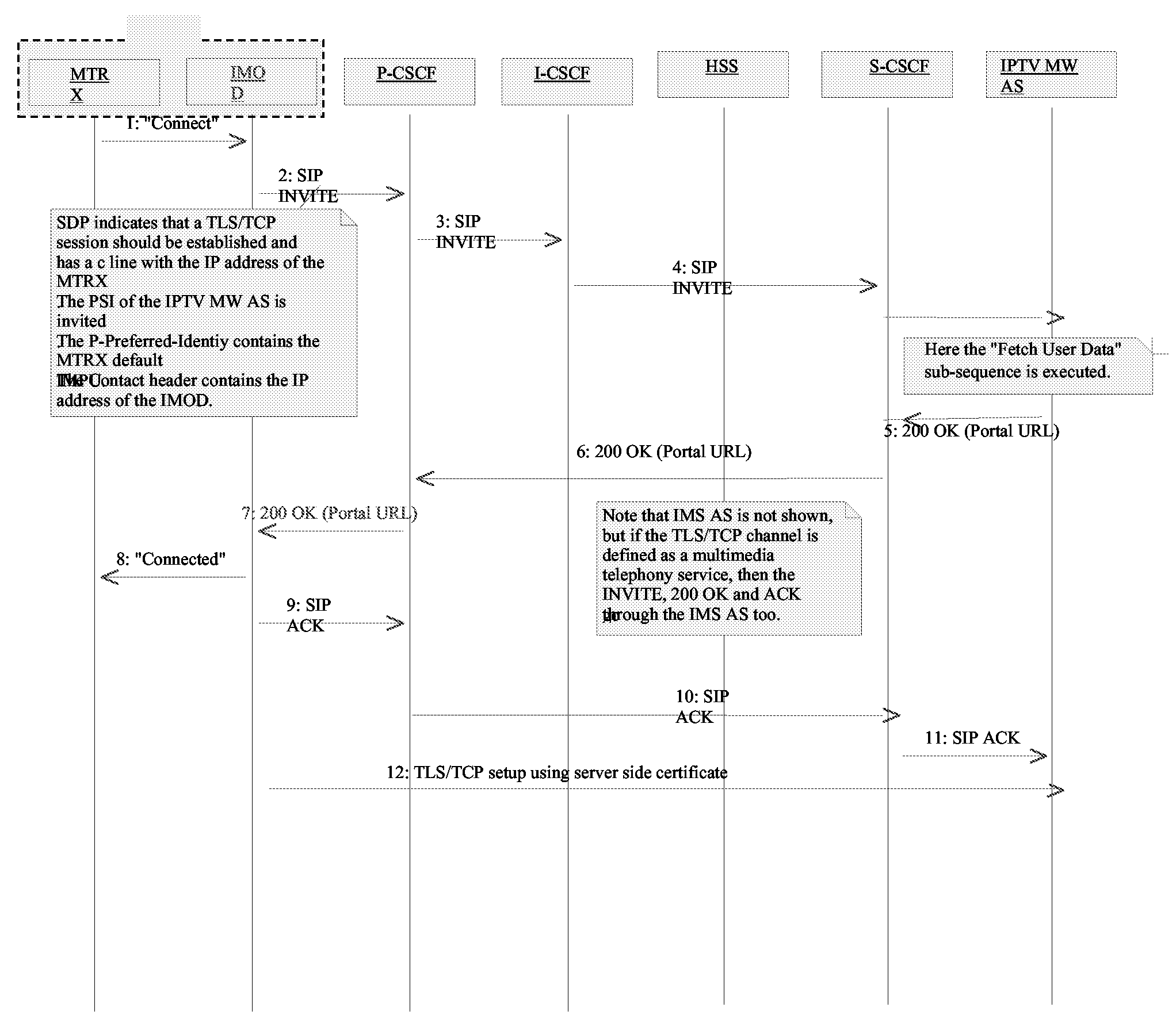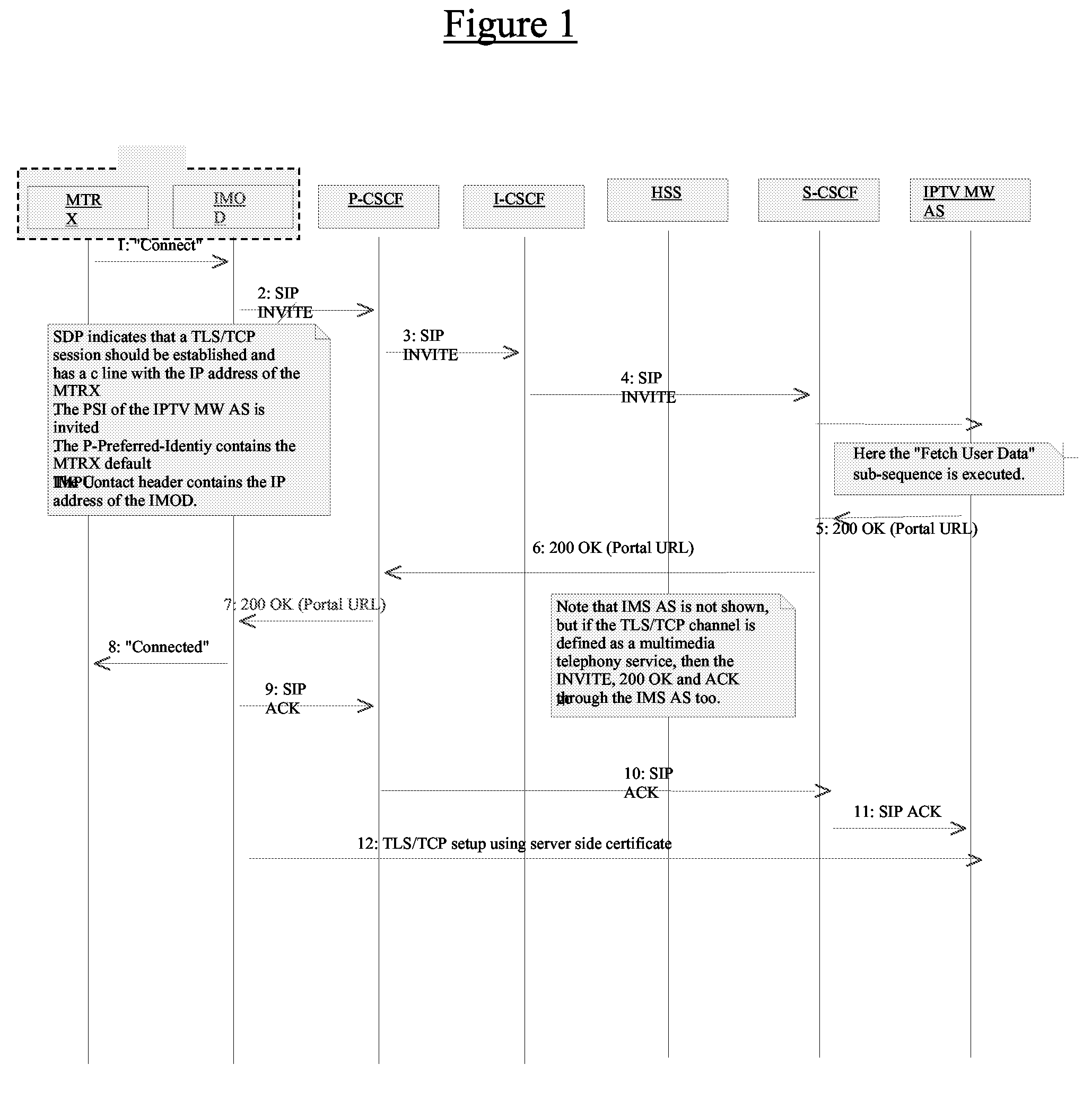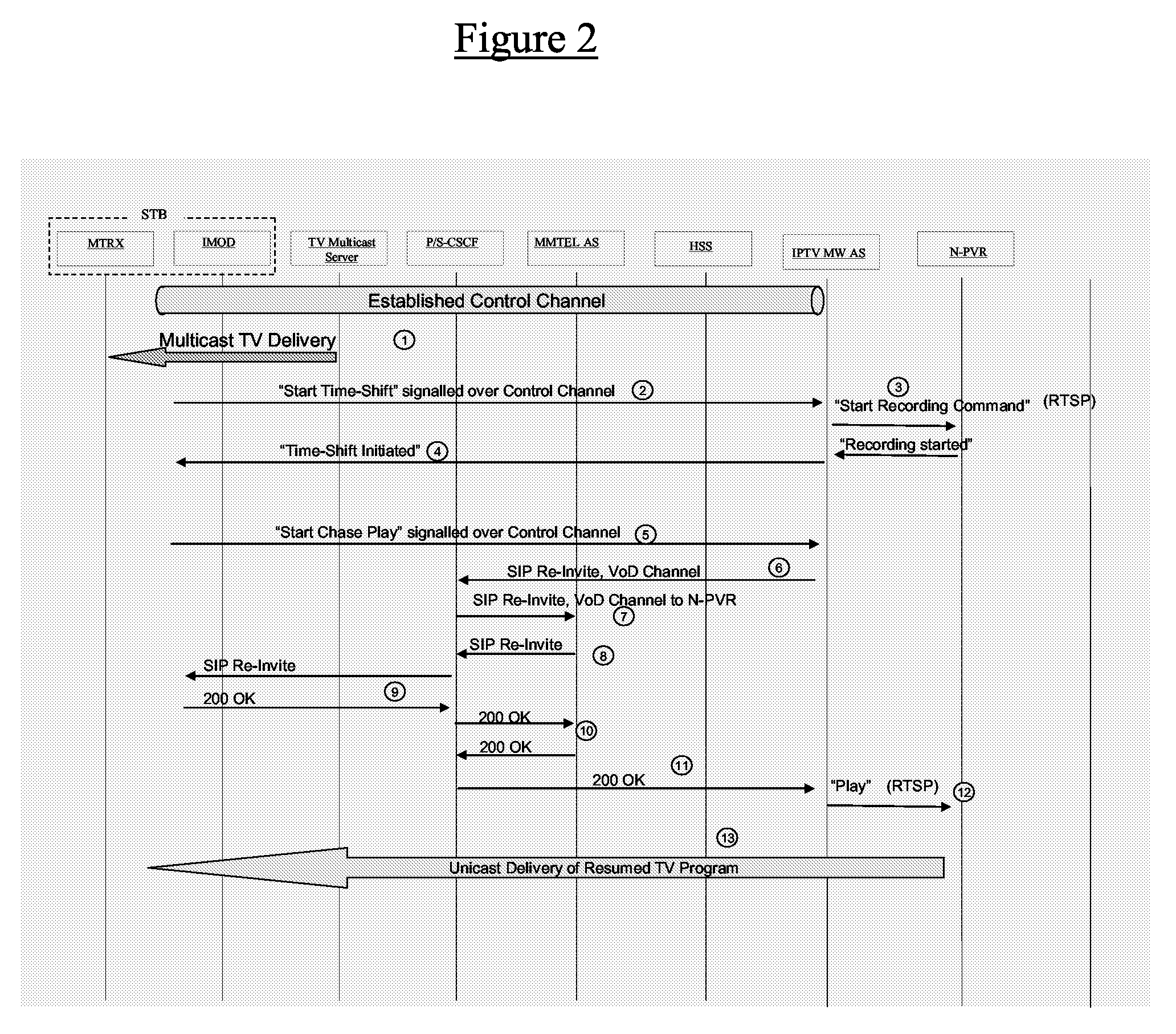Time-Shifting and Chase-Play for an IPTV System
- Summary
- Abstract
- Description
- Claims
- Application Information
AI Technical Summary
Benefits of technology
Problems solved by technology
Method used
Image
Examples
Embodiment Construction
[0034]By way of background to the preferred embodiment, the following is a brief description of how the IP Multimedia Subsystem (IMS) fits into the mobile network architecture in the case of a GPRS / PS access network. Call / Session Control Functions (CSCFs) operate as SIP proxies within the IMS. The 3GPP architecture defines three types of CSCFs: the Proxy CSCF (P-CSCF) which is the first point of contact within the IMS for a SIP terminal; the Serving CSCF (S-CSCF) which provides services to the user that the user is subscribed to; and the Interrogating CSCF (I-CSCF) whose role is to identify the correct S-CSCF and to forward to that S-CSCF a request received from a SIP terminal via a P-CSCF.
[0035]A user registers with the IMS using the specified SIP REGISTER method. This is a mechanism for attaching to the IMS and announcing to the IMS the address at which a SIP user identity can be reached. The user receives a unique Uniform Resource Identifier (URI) from the S-CSCF to be used when ...
PUM
 Login to View More
Login to View More Abstract
Description
Claims
Application Information
 Login to View More
Login to View More - R&D
- Intellectual Property
- Life Sciences
- Materials
- Tech Scout
- Unparalleled Data Quality
- Higher Quality Content
- 60% Fewer Hallucinations
Browse by: Latest US Patents, China's latest patents, Technical Efficacy Thesaurus, Application Domain, Technology Topic, Popular Technical Reports.
© 2025 PatSnap. All rights reserved.Legal|Privacy policy|Modern Slavery Act Transparency Statement|Sitemap|About US| Contact US: help@patsnap.com



